Disclosure: This article contains affiliate links. We may earn a commission from purchases at no extra cost to you, which helps our travel content.
Standing on the edge of Hudson Bay with the crisp autumn air filling my lungs, I watched in awe as an Indigenous guide pointed out subtle tracks in the tundra—signs of the magnificent polar bears that call this region home. My recent journey to Churchill wasn't just about wildlife spotting; it was a profound cultural exchange that reconnected me with my Canadian roots in ways I never expected. The Cree and Dene peoples have coexisted with these magnificent creatures for thousands of years, and their perspective transforms a simple wildlife expedition into something far more meaningful.
Choosing an Indigenous-Led Polar Bear Experience
When planning my Churchill adventure, I deliberately sought out Indigenous-led tours rather than standard commercial expeditions. This decision made all the difference. Companies like Wapusk Adventures and Sea North Tours offer experiences guided by local Cree and Dene knowledge keepers who share not just wildlife expertise, but generations of cultural wisdom about the land.
What struck me immediately was how these tours approach wildlife viewing through a lens of respect rather than entertainment. Our guide Joseph explained that in traditional Indigenous worldviews, animals are regarded as teachers and relations—not attractions. This perspective completely transformed how I experienced each bear sighting.
Before heading out, I invested in a quality thermal base layer which proved essential for staying comfortable during long hours on the tundra. Churchill's fall temperatures can drop well below freezing, especially with wind chill coming off Hudson Bay.
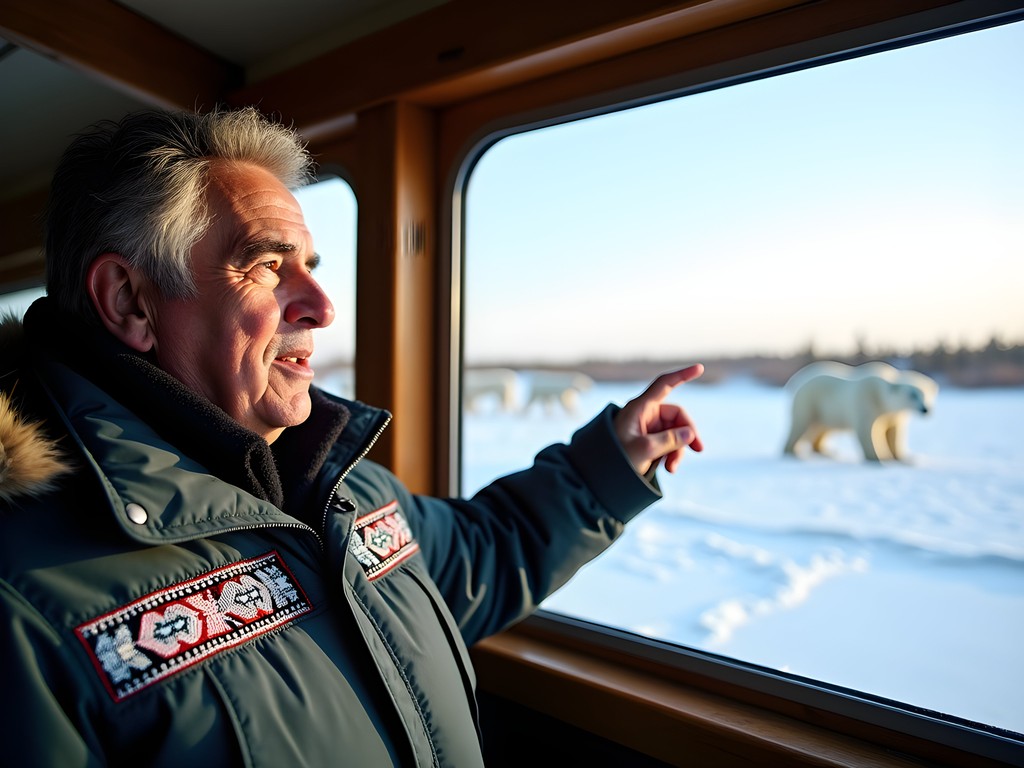
💡 Pro Tips
- Book Indigenous-led tours at least 6 months in advance as they tend to be smaller groups with limited availability
- Look for tours that explicitly share proceeds with local Indigenous communities
- Request an elder talk or cultural component as part of your wildlife experience
Daily Life in the Polar Bear Capital
Churchill itself is a fascinating study in cultural harmony. With a population of just under 900 people, this remote community brings together Cree, Dene, Inuit, and settler Canadian cultures in a unique subarctic melting pot. During my week-long stay, I made a point of spending time at the Itsanitaq Museum (formerly known as the Eskimo Museum), which houses one of Canada's finest collections of Inuit carvings and artifacts.
The town operates on polar bear time during autumn, with daily bear alerts and a special patrol that safely relocates bears who wander too close to human settlements. I found myself checking the local Facebook group each morning for bear sightings—it's as routine for locals as checking traffic reports is for city dwellers!
For accommodations, I stayed at the family-run Polar Inn, which offers simple but comfortable rooms with northern hospitality. The walls are thin, so I was glad I brought my white noise machine to ensure sound sleep after long days on the tundra.
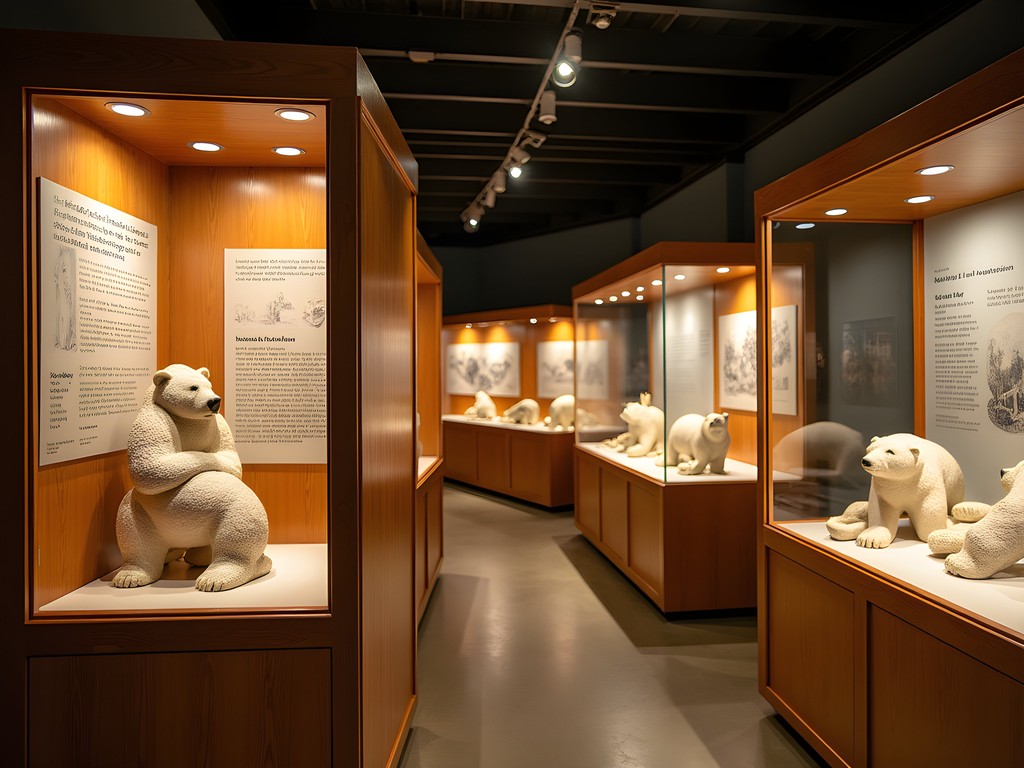
💡 Pro Tips
- Download the Churchill Bear Alert app to receive notifications about bear activity in town
- Visit the Parks Canada Visitor Centre for excellent educational displays about the region's ecology
- Support Indigenous artisans by purchasing directly from them at the local craft market
Learning the Language of the Land
As a speech therapist, I'm naturally drawn to language and communication in all its forms. What fascinated me most about my time with Indigenous guides was learning how their languages contain sophisticated ecological knowledge embedded within everyday vocabulary. Words for different types of snow, ice conditions, and animal behaviors reveal a profound understanding of the environment that English simply cannot capture.
Our guide taught us basic Cree greetings and phrases, explaining how the language connects speakers to the land in ways that shape perception and relationship. When he described polar bears using the Cree term maskwa wâpiskisiw (white bear), he explained that traditional stories position bears not as fearsome predators but as wise teachers who demonstrate survival skills.
During evening cultural programs, elders shared traditional stories that have been used for generations to transmit important knowledge about safely coexisting with wildlife. I recorded these sessions using my digital voice recorder to revisit later—with permission, of course. The clarity of the recordings allowed me to catch nuances I missed in the moment.

💡 Pro Tips
- Learn a few basic greetings in Cree or Dene to show respect to local guides and elders
- Ask permission before recording or photographing cultural demonstrations
- Participate in a traditional tea boiling if offered—it's both a skill demonstration and social ritual
Sustainable Wildlife Viewing Practices
What truly sets Indigenous-led polar bear tours apart is their commitment to minimal environmental impact. Unlike some commercial operations that prioritize getting as close as possible to bears for photos, our guides emphasized maintaining respectful distances and understanding bear behavior through observation.
We traveled primarily in specially designed tundra buggies that move slowly across the landscape on designated trails to minimize habitat disruption. When we did spot bears, our guides used traditional tracking knowledge to anticipate their movements, positioning us thoughtfully rather than pursuing the animals.
For wildlife viewing, a good pair of thermal gloves is essential—these allow you to operate camera equipment while keeping your hands warm in the biting cold. I also found my insulated water bottle invaluable for keeping tea hot throughout the day, which is more than just a comfort when temperatures hover around freezing.
The guides taught us to read subtle body language signals from the bears, explaining how a seemingly minor shift in ear position or stance can indicate whether an animal is relaxed, curious, or becoming stressed by human presence. This knowledge not only enhances safety but deepens appreciation for these magnificent creatures on their own terms.
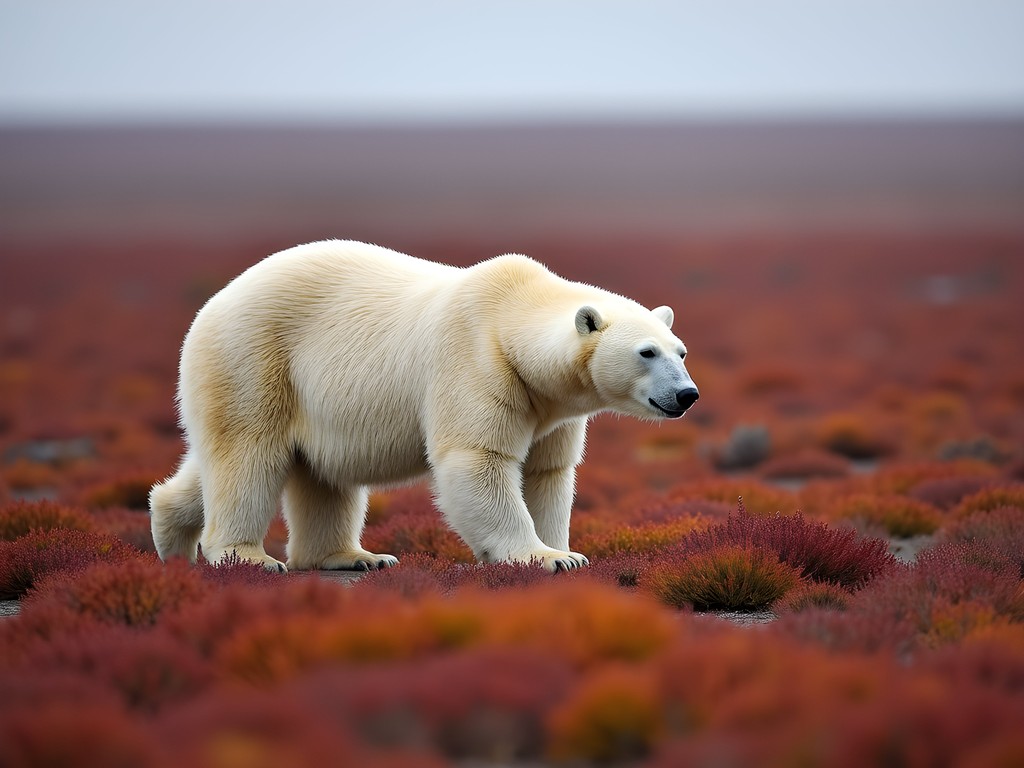
💡 Pro Tips
- Choose tours with strict wildlife viewing protocols that prioritize animal welfare
- Bring a camera with a good zoom lens to photograph bears from a respectful distance
- Listen carefully to guides' instructions about movement and noise levels around wildlife
Connecting Through Shared Meals
Some of my most meaningful cultural exchanges happened not on the tundra but around dinner tables in Churchill. Many Indigenous-led tours include traditional meals as part of the experience, offering visitors a taste of local foodways and the stories behind them.
One evening, we participated in a country food dinner featuring locally harvested fish, game, and foraged plants. Our hosts explained how traditional hunting and gathering practices are sustainable by nature, taking only what's needed and using every part of what's harvested. The bannock (a type of quick bread) we helped prepare became a vehicle for conversations about colonization, resilience, and food sovereignty in northern communities.
I was particularly moved when an elder explained how sharing food is considered a form of medicine in many Indigenous cultures—nourishing not just bodies but relationships and community bonds. For families traveling together, these shared meal experiences create natural opportunities for children to engage with different cultural perspectives through the universal language of food.
After returning home, I've continued exploring northern Indigenous cuisines using the cookbook recommended by one of our guides.

💡 Pro Tips
- Come with an open mind and palate—traditional foods may include items unfamiliar to southern visitors
- Ask respectful questions about food preparation and cultural significance
- Bring a small gift to share with hosts if invited to a community meal (tea or coffee is always appreciated)
Final Thoughts
As my week in Churchill came to an end, I realized that what made this journey exceptional wasn't just the majestic polar bears—though they were certainly breathtaking—but the cultural context through which I was invited to see them. Through Indigenous perspectives, these animals transformed from exotic wildlife attractions into fellow inhabitants of a complex ecosystem that has sustained human communities for millennia.
For couples seeking a meaningful travel experience that combines wildlife encounters with cultural depth, Churchill offers something truly special. The connections formed with local guides and community members will likely stay with you long after the polar bear photos have been filed away. My Japanese mother always emphasized that true travel should change how you see the world, not just show you its surface—and in this remote corner of Manitoba, that transformation happens naturally.
If you make this journey, arrive with an open heart and a willingness to listen. The polar bears may be Churchill's celebrities, but it's the human stories intertwined with them that will ultimately enrich your understanding of this unique place where cultures, species, and ecosystems converge in delicate balance.
✨ Key Takeaways
- Indigenous-led tours provide cultural context that transforms wildlife viewing into a deeper learning experience
- Respectful wildlife practices prioritize animal welfare over photo opportunities
- Cultural exchange through food, language, and storytelling creates meaningful connections with local communities
- The perspectives gained from Indigenous guides challenge conventional wildlife tourism narratives
- Churchill offers couples a unique combination of adventure and cultural immersion in an intimate setting
📋 Practical Information
Best Time to Visit
October-November (peak polar bear season)
Budget Estimate
$4,000-6,000 per person for a week including flights, accommodation, and guided tours
Recommended Duration
5-7 days
Difficulty Level
Moderate (Remote Location With Limited Medical Facilities And Challenging Weather Conditions)

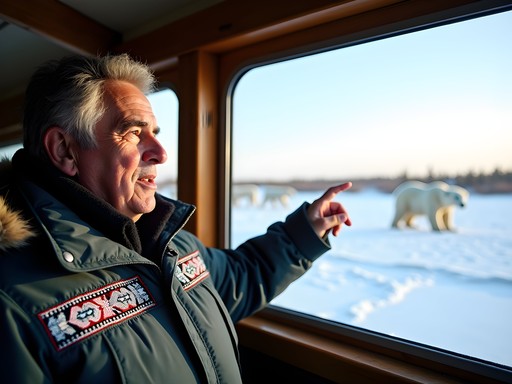

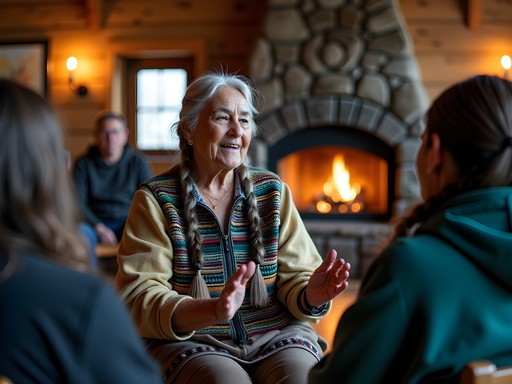
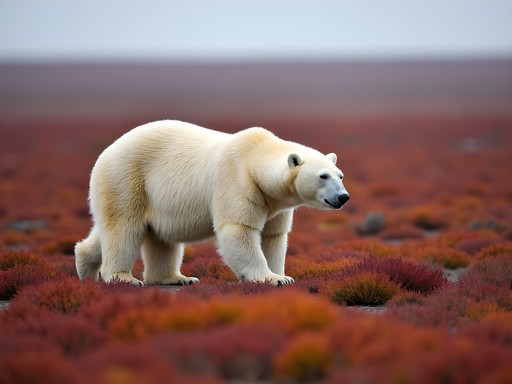
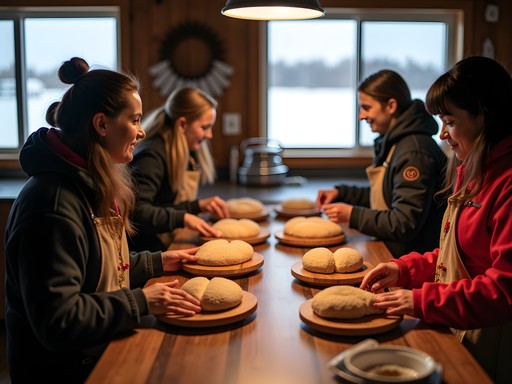









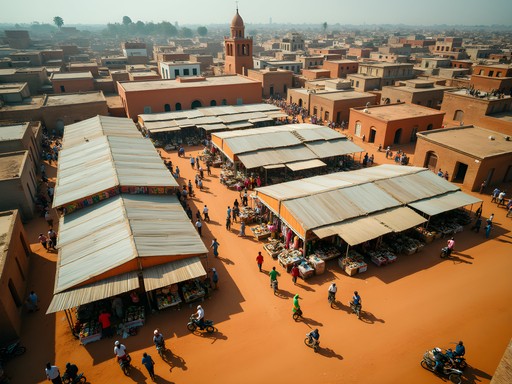
Comments
wildninja
This is exactly the kind of travel experience I've been searching for! Something that connects wildlife viewing with cultural understanding. I'm tired of typical tourist experiences that feel disconnected from the place. Did you feel like the week was enough time? Or would you recommend staying longer?
Sakura Payne
A week was good, but I could have easily stayed another 3-4 days. The weather can be unpredictable, so having extra time increases your chances of good bear viewing days. Plus there's the dog sledding and northern lights to experience too!
wildninja
Thanks for the advice! I'll plan for 10 days then. Can't wait!
springguide
Just booked my trip for next October after reading this! Can't wait!
Casey Andersson
I visited Churchill last October and it was absolutely life-changing. While I typically go for more luxurious accommodations, I stayed at the same community-run lodge you mentioned and wouldn't have had it any other way. The authenticity of the experience was worth every bit of rustic charm! Our guide taught us about traditional Dene tracking techniques and I was amazed at how they could spot bears that were practically invisible to my untrained eye. For anyone planning to go, I highly recommend bringing a proper camera with a good zoom lens - my telephoto lens captured amazing details while keeping a respectful distance. Sakura, did you get to see the northern lights while you were there? We had one spectacular night where the bears and aurora appeared simultaneously!
wanderluststar
Which Indigenous-led tour company did you use? Planning a trip for next fall and would love a recommendation!
Sakura Payne
I went with Wapusk Adventures - they're Cree-owned and their cultural program was fantastic. Book early though, they fill up fast for bear season!
smartpro
WOW!!! Those polar bear photos are INCREDIBLE! Definitely adding this to my bucket list right now. The way you described the Indigenous guides tracking the bears gave me chills. Nature at its finest!
Savannah Walker
This brought back so many memories of my Churchill trip last year! The Indigenous guides completely transformed my experience too. They shared stories about how their ancestors have coexisted with 'nanuk' (polar bears) for generations. One elder taught us how they used to interpret bear movements to predict weather patterns! Did your guides share any traditional knowledge about climate change impacts? Our guide Jonah was incredibly concerned about how warming temperatures are affecting denning habits. Also, did you try bannock while you were there? That fresh-baked bread over an open fire was almost as memorable as the bears themselves!
Sakura Payne
Yes! Our guide Matthew talked extensively about how the ice forms later each year, which means bears spend more time on land and get less hunting time. And the bannock was incredible - we had it with cloudberry jam!
travelstar7498
I've always wanted to see polar bears in the wild! How cold was it in Churchill when you visited? I'm thinking about planning a trip but I'm worried about freezing my butt off lol
skyseeker
How close did you actually get to the polar bears? Were you in those big tundra vehicles or on foot with the guides?
Sakura Payne
Great question! We used both - the Indigenous guides took us in tundra buggies for safety, but we also did some walking tours in protected areas where bears were less likely to be. The guides were incredibly knowledgeable about reading bear behavior and keeping a safe distance.
skyseeker
Thanks for explaining! That sounds like the perfect balance of safety and adventure.
springchamp
Just booked my trip for next fall after reading this! Can't wait to experience the Indigenous perspective on these magnificent creatures.
Timothy Jenkins
Sakura, your focus on the cultural aspects of the experience is spot on. I visited Churchill in 2023 and found that the Indigenous knowledge completely transformed how I understood the ecosystem there. Our Cree guide showed us how to identify different animal tracks and explained the traditional conservation practices that have helped maintain balance in the region for centuries. One element I'd add for those planning a visit: take time to explore the Itsanitaq Museum in Churchill to learn about Inuit art and history before your bear tour. The context it provides makes the whole experience richer. Also, consider extending your stay by 2-3 days to participate in a traditional craft workshop if available - I learned basic mittenmaking and it was a highlight of my trip.
Sakura Payne
Great suggestion about the Itsanitaq Museum, Timothy! I visited on my first day and it really did provide valuable context. I missed the craft workshops though - definitely adding that to my list for next time!
Venture X
Premium card with 2X miles, $300 travel credit, Priority Pass